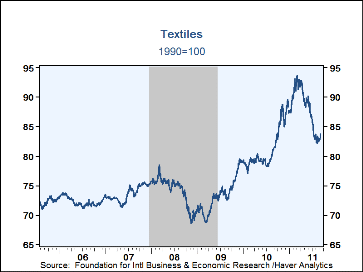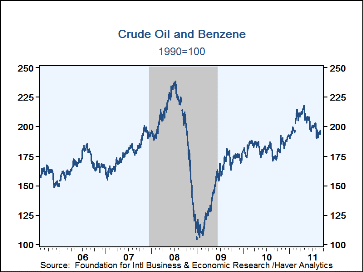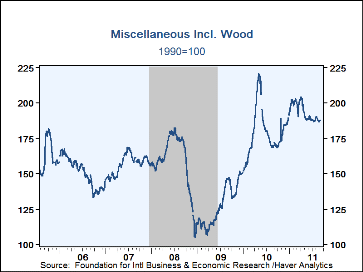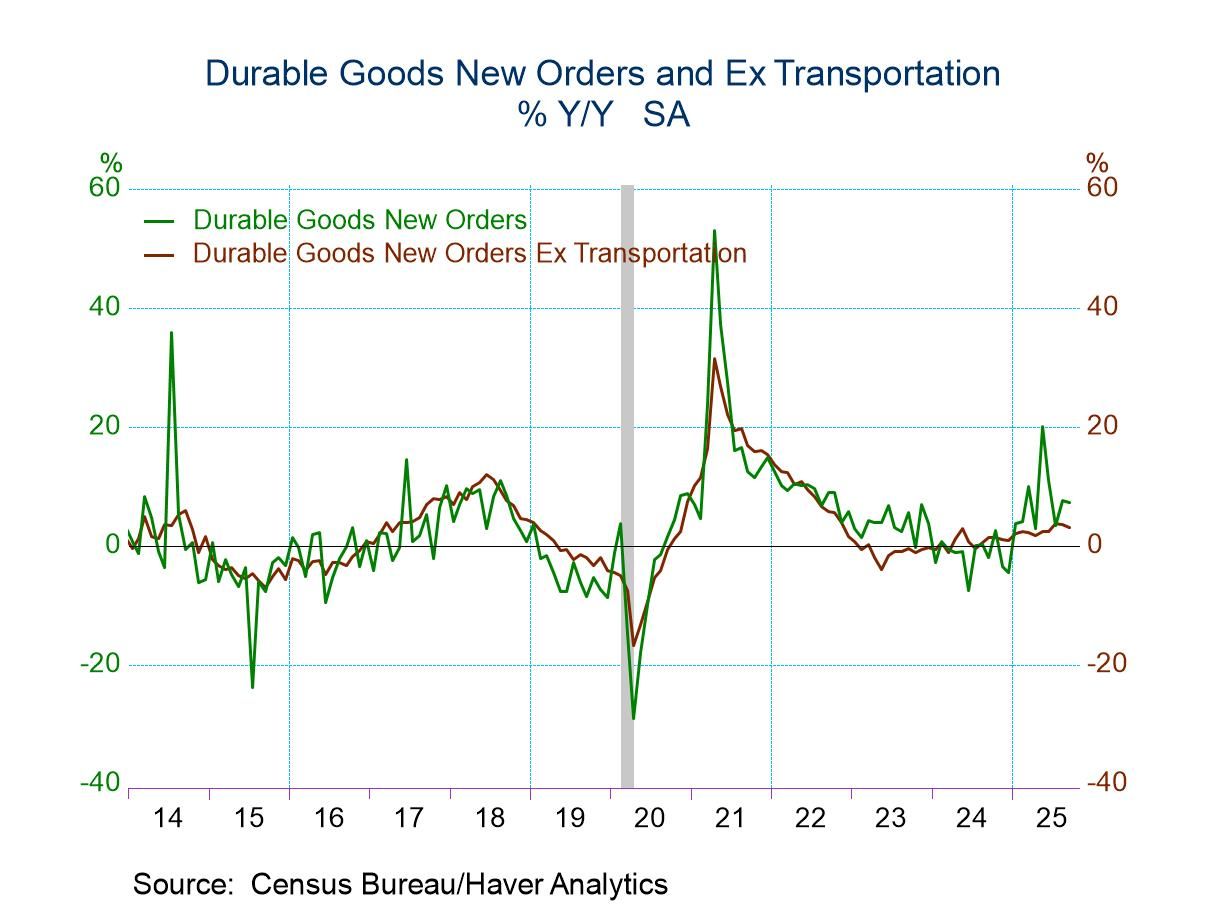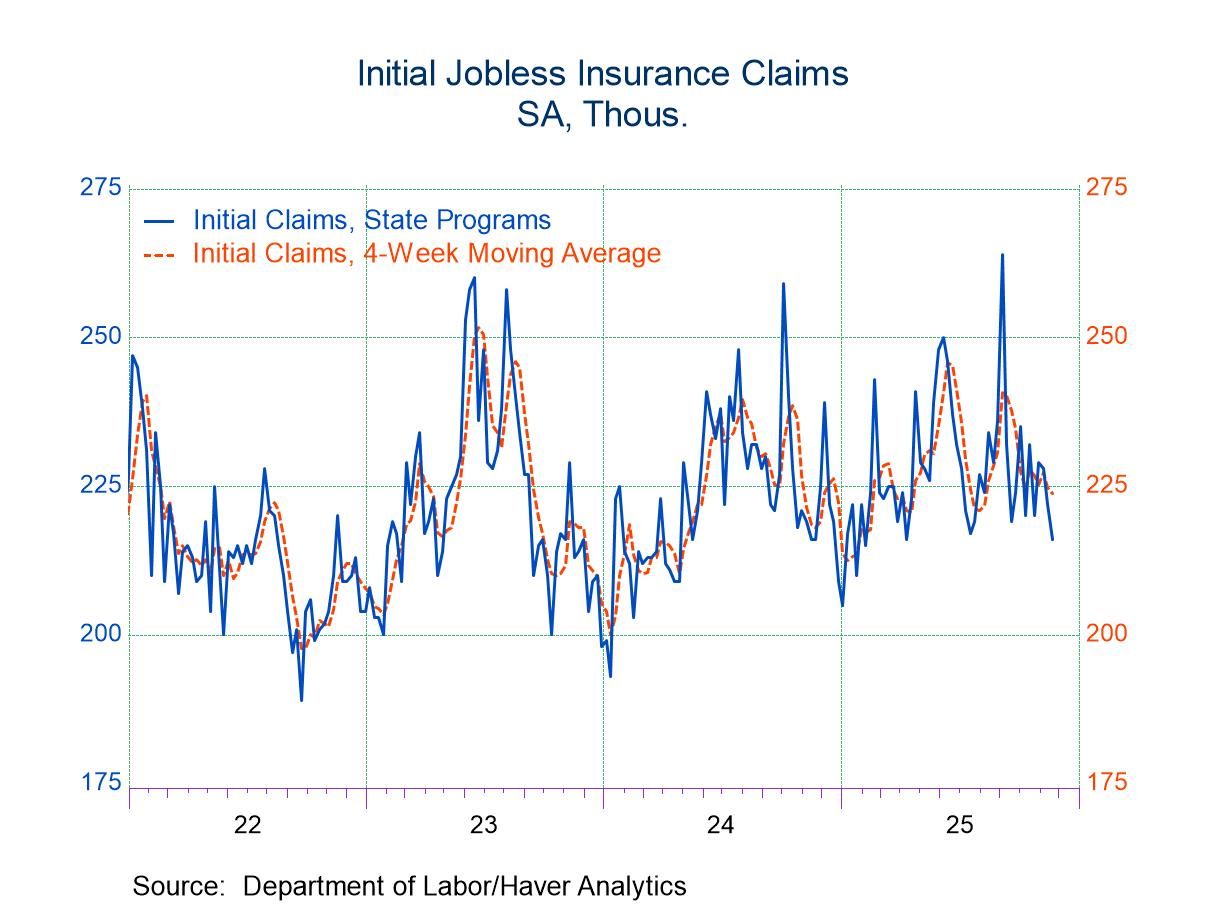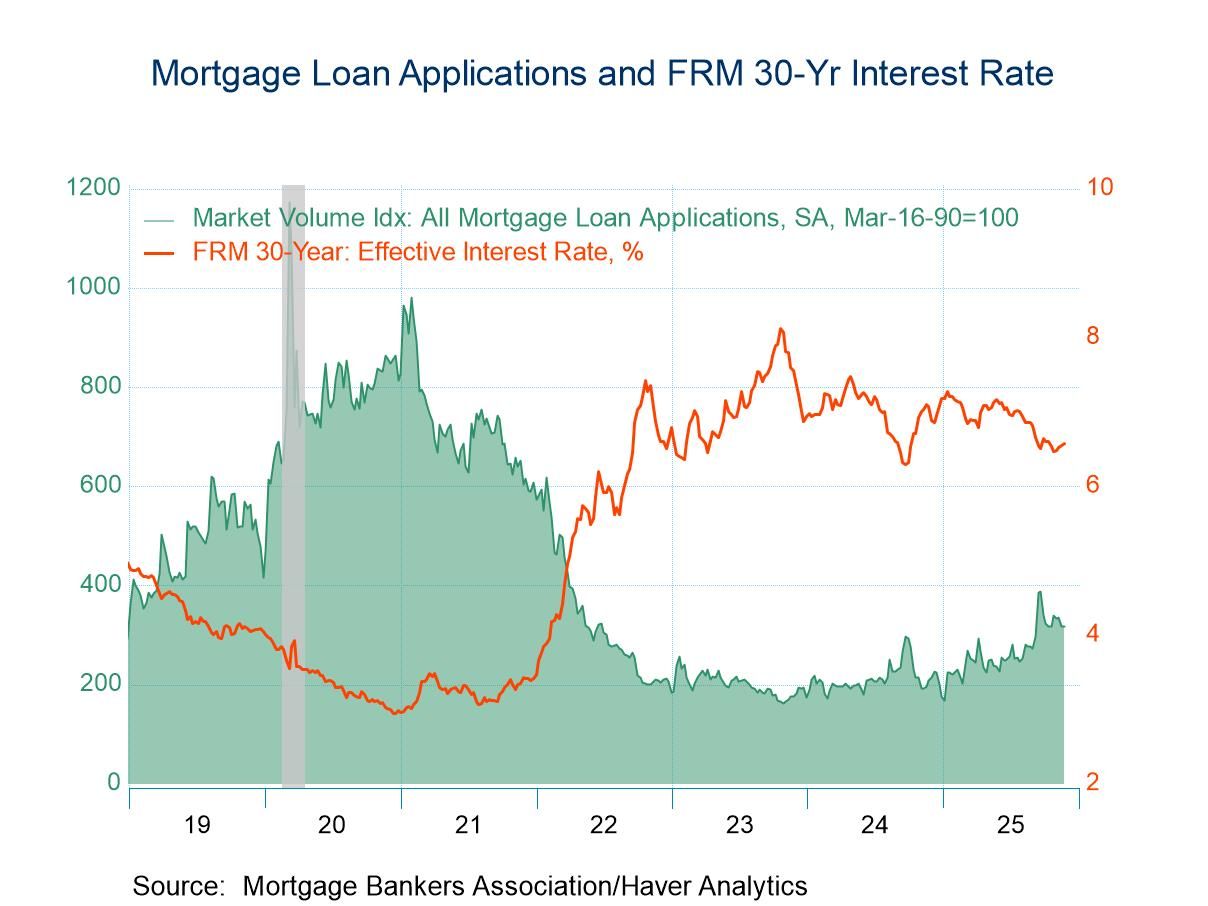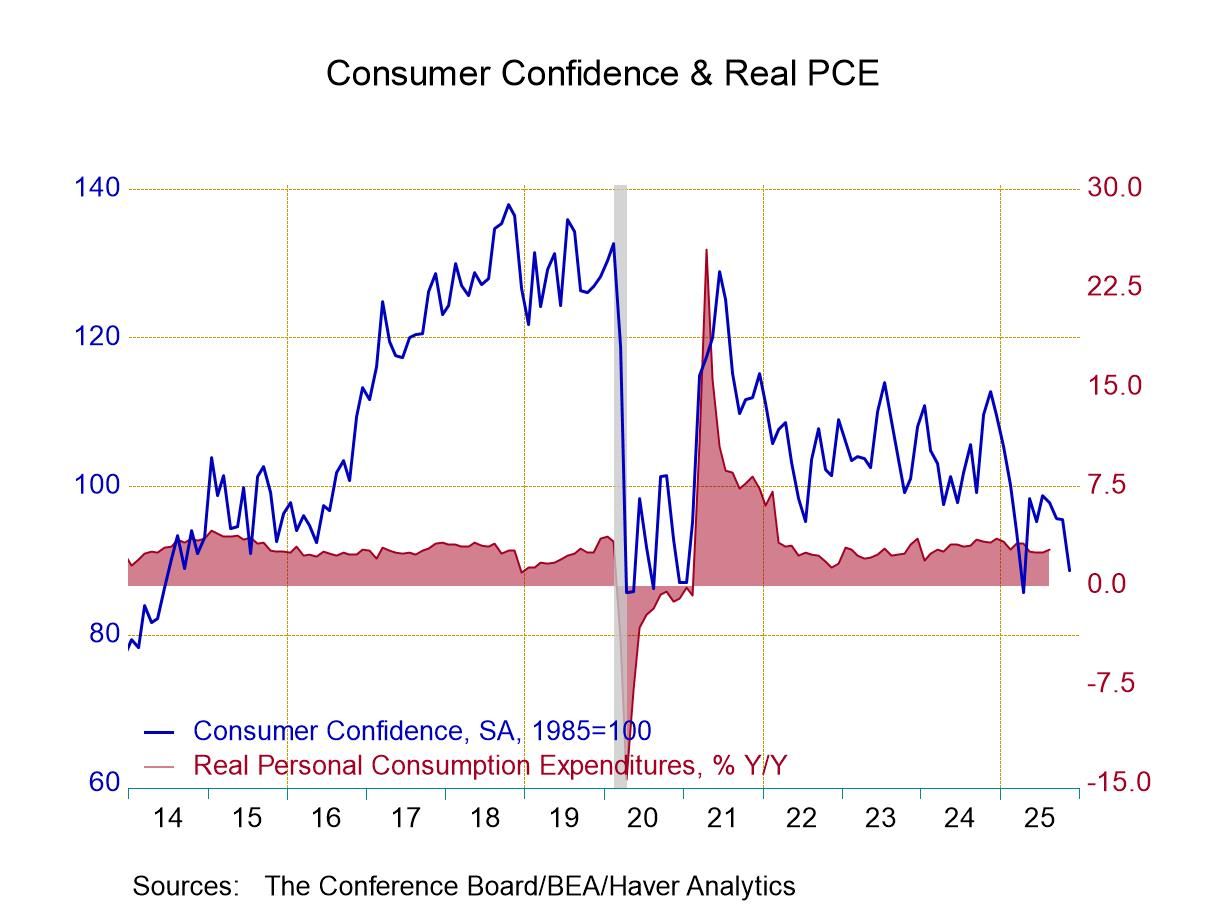 Global| Sep 09 2011
Global| Sep 09 2011FIBER: Industrial Commodity Prices Find A Floor
by:Tom Moeller
|in:Economy in Brief
Summary
Industrial commodity prices recently have found stability after their downdraft one month ago. At 170.4, the latest price index reading from the Foundation for International Business and Economic Research (FIBER), which covers [...]
Industrial commodity prices recently have found stability after their
downdraft one month ago. At 170.4, the latest price index reading from the
Foundation for International Business and Economic Research (FIBER), which
covers industrial materials prices, is up slightly but still below where
it was in early-August. Through Q2, industrial output growth, which is the
prime mover of these prices, weakened considerably.
 Three-month
growth in industrial materials output of 1.6% was its weakest since the
recession. But during June & July there was a glimmer of strength as
industrial output of materials firmed by 0.7% and 0.8%, respectively.
Three-month
growth in industrial materials output of 1.6% was its weakest since the
recession. But during June & July there was a glimmer of strength as
industrial output of materials firmed by 0.7% and 0.8%, respectively.
As such, weakness in each of the FIBER subgroups recently has stabilized. Textiles moved higher on slight upturns in cotton & burlap prices. Regardless, cotton prices remained roughly half the level of early this year. This occurred despite an upturn in textile materials output. Crude oil & benzene prices also rose slightly with the stabilization of crude oil prices near $97.00. They remained down, however, versus the spring, 2011 peak of $113.93. Prices in the miscellaneous group also improved slightly as lumber and rubber prices found a floor. However, the index remained down 8% from its high. Lumber prices continued to weaken as the housing market has yet to materially improve. Prices in the metals group have been erratic. Here, the index first rose in late-August but has since weakened. This came after more-than doubling the recession low. Prices for most metals have shown that volatility though copper scrap rose by four times since the recession low as did steel scrap prices. Lead, zinc and aluminum prices doubled.
Overall, prices for industrial materials should be characterized as a coincident indicator of the economy. As such, recent improvement in some prices could suggest that recession fears are overblown. However, growing worries about the shape of consumer spending and its impact on output would change that conclusion if they came to pass.
Commodity price data can be found in Haver's DAILY, WEEKLY, USECON and CMDTY databases.
| FIBER Industrial Materials Price Index (1990=100) | Latest | Latest Y/Y | 2010 | 2009 | 2008 |
|---|---|---|---|---|---|
| All Items | 170.4 | 9.5% | 158 | 121 | 149 |
| Textiles | 83.7 | 2.9 | 81 | 73 | 74 |
| Cotton (cents per pound) | 107.7 | 23.8 | 87.8 | 52.5 | 58.0 |
| Metals | 277.1 | 13.9 | 240 | 168 | 233 |
| Aluminum ($ per metric ton) | 2,354.5 | 11.1 | 2,172 | 1,662 | 2,571 |
| Copper Scrap (cents per pound) | 406.9 | 17.7 | 327 | 197 | 280 |
| Steel Scrap ($ per ton) | 419.7 | 29.9 | 326 | 204 | 350 |
| Crude Oil & Benzene | 196.5 | 13.4 | 182 | 151 | 200 |
| Crude Oil ($ per Barrel) | 89.3 | 19.5 | 79.43 | 61.71 | 99.73 |
| Miscellaneous | 188.1 | 9.5 | 179 | 128 | 159 |
| Natural Rubber (cents per pound) | 254.2 | 33.3 | 182 | 84 | 124 |
| Framing Lumber ($ per 1000 board ft.) | 258 | 4.0 | 283 | 221 | 253 |
FIBER is the Foundation for International Business & Economic Research
Tom Moeller
AuthorMore in Author Profile »Prior to joining Haver Analytics in 2000, Mr. Moeller worked as the Economist at Chancellor Capital Management from 1985 to 1999. There, he developed comprehensive economic forecasts and interpreted economic data for equity and fixed income portfolio managers. Also at Chancellor, Mr. Moeller worked as an equity analyst and was responsible for researching and rating companies in the economically sensitive automobile and housing industries for investment in Chancellor’s equity portfolio. Prior to joining Chancellor, Mr. Moeller was an Economist at Citibank from 1979 to 1984. He also analyzed pricing behavior in the metals industry for the Council on Wage and Price Stability in Washington, D.C. In 1999, Mr. Moeller received the award for most accurate forecast from the Forecasters' Club of New York. From 1990 to 1992 he was President of the New York Association for Business Economists. Mr. Moeller earned an M.B.A. in Finance from Fordham University, where he graduated in 1987. He holds a Bachelor of Arts in Economics from George Washington University.



